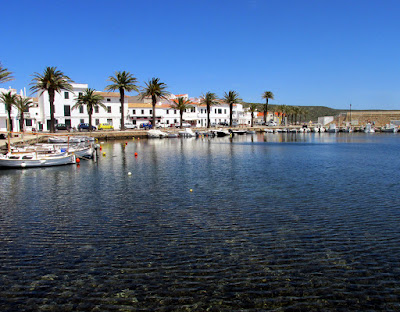Conder Green has its detractors, including those who complain they “never see anything there”. Perhaps it’s the same people who visit just periodically, expect to see the scarce birds that sometimes turn up there but who neglect to take an interest in the common birds that are always around?
Anyway the old place is going through something of a purple patch at the moment with a pair of Common Terns breeding for the third successive year, and now this year a pair of Avocets. Both events have caused visitor numbers to increase and it’s good to see the interest shown.
The Common Terns and the Avocets are both nesting on the same distant island of the pool where the water levels are currently ideal for species that wish to nest. A pair of Oystercatchers had two good sized youngsters this morning with three or four other pairs looking as though they might do similar.
Oystercatcher
Avocet
A few lingering Avocets Recurvirostra avosetta were in Menorca just a few weeks ago where my pal Javier told me that the Spanish name for Avocet is “cusisacs”, which means “sack-sower”; the curved shape of its bill being similar to the traditional darning needles used to repair sacks.
It has taken Avocets a good number of years to adopt Conder Green considering the recent healthy populations in Morecambe Bay and on the Ribble Marshes, plus the fact that the species is now a regular rather than a spasmodic spring migrant in these parts. Not so on 1st April 1983 when I discovered one feeding along Pilling shore, following which the sighting was met with some scepticism by those who thought it an April Fool prank. Birders don't design wind-ups about rare birds.
The pool was quite busy, especially so when a Barn Owl appeared to jolt others from their parental duties. A number of birds joined in the mobbing to see the owl off site, including both terns, the male avocet and a couple of Oystercatchers but the owl wasn’t for lingering as it had food to deliver. It’s a rubbish shot but tells the story of how birds react to predators on their patch. I saw a second or the same Barn Owl an hour or so later, this time from the road bridge.
Common Tern and Barn Owl
Barn Owl
Also on the pool/creeks - 15 Shelduck, 15 Redshank, 2 Wigeon, 6 Tufted Duck, 3 Lapwing, 1 Curlew, 3 Greylag, 1 Great Crested Grebe, 1 Little Egret, 1 Grey Heron and a flying visit from 12 Black-tailed Godwit.
That’s a pretty good list by any standard but it’s not done yet as a walk around the area discovered 3 Stock Dove, 15 House Martin, 12 Swallow, 4+ Linnet, 2 Goldfinch, 3 Sedge Warbler, 3 Reed Bunting, 2 Reed Warbler, 3 Whitethroat, 4 Greenfinch, 1 Song Thrush, 1 Meadow Pipit and 1 Blackcap.
Sedge Warbler
House Martins were collecting mud from the creeks, definitely building at Four Winds and trying to do so at Café De Lune where of course the proprietors have declared the martins to be persona non grata and made great efforts to keep the birds at bay.
It was while watching the martins that a number of Redshanks exploded noisily from the nearby creeks as a Hobby shot through my vision and disappeared over the trees behind. Thoughts of the martins forgotten I looked for the Hobby without much hope, elusive creatures as they are.
Hobby
That was a pretty eventful and productive morning on the old patch. I should do that more often.
Linking today to Eileen's Saturday and Run A Round Ranch.
Linking today to Eileen's Saturday and Run A Round Ranch.

















































































.jpg)












